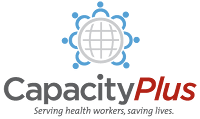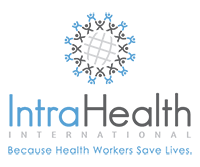Planning
Rapid Assessment of Health Services in Punjab using a Mixed Method Approach
The out-of-pocket expenditure is quite high in Punjab. Hence, a rapid review of health facilities was undertaken to suggest remedial measures.[from abstract]
- 727 reads
Training and Deploying Human Resources for Health for Maternal, Newborn, and Child Health in Rural Africa: An In-Depth Policy Analysis
The majority of African countries lack sufficient human resources for health (HRH) to deliver basic maternal, newborn, child health (MNCH) care, particularly in rural areas. To inform planning for the scarce HRH available, specifically as it pertains to the Millennium Development Goals and the post-2015 agenda, a rapid systematic review of evidence on training and deployment policies for doctors, nurses and midwives for MNCH in rural Africa was undertaken. [from abstract]
- 1003 reads
The Health Workforce in Latin America and the Caribbean An Analysis of Colombia, Costa Rica, Jamaica, Panama, Peru, and Uruguay
This study intends to provide an update of the status of the human resources for health (HRH) subsystem in six countries of Latin America and the Caribbean (LAC)—Colombia, Costa Rica, Jamaica, Panama, Peru, and Uruguay. The study’s discussion centers around five questions: how the health workforce is financed, how it is organized, how it is managed, how it is regulated, and how it performs. Further, the study strives to understand what role, if any, performance management policies and incentives play in these countries’ HRH subsystems.
- 961 reads
What Do District Health Managers in Ghana Use Their Working Time for? A Case Study of Three Districts
Ineffective district health management potentially impacts on health system performance and service delivery. However, little is known about district health managing practices and time allocation in resource-constrained health systems. Therefore, a time use study was conducted in order to understand current time use practices of district health managers in Ghana. [from abstract]
- 835 reads
Baseline and Work Load Indicator Assessment for Community Health Workforce: A Case of Selected Community Units in Nyanza and Coast Regions
This study sought to assess the staff requirements, work load and performance with respect to the CH work force
using workload indicator of staffing need (WISN) tool. The ultimate objective was to provide information to guide the organization, management and development of the work force. [from abstract]
- 817 reads
Strengthening Human Resource for Health in South-East Asia: Time for Action and Commitment (Report of a regional meeting, Thimphu, Bhutan, 19–21 November 2014)
The meeting was organized under three themes: (i) rural retention of health workforce; (ii) transforming and scaling up health professionals’ education and training; and (iii) human resources for health in the context of universal health coverage(UHC). [from abstract]
- 704 reads
Assessment of Human Resources for Health Programme Implementation in 15 Latin American and Caribbean Countries
The health systems in the Americas region are characterized by fragmentation and segmentation, which constitute an important barrier to expanding coverage, achieving integrated primary health care, and reducing inefficiency and discontinuity of care. [from abstract]
- 624 reads
Tracking Implementation and (Un)intended Consequences: A Process Evaluation of an Innovative Peripheral Health Facility Financing Mechanism in Kenya
In many African countries, user fees have failed to achieve intended access and quality of care improvements. Subsequent user fee reduction or elimination policies have often been poorly planned, without alternative sources of income for facilities. We describe early implementation of an innovative national health financing intervention in Kenya; the health sector services fund (HSSF). [from abstract]
- 442 reads
Health Sector Planning and Budgeting in Kenya: Recommendations to Improve Alignment
Kenya, like many developing countries, suffers from a persistent misalignment between policy, planning and budgeting; resulting in a failure of the government to achieve public sector targets and respond to changing population needs. Research conducted by KEMRI-Wellcome Trust Research Programme has found that several years after the adoption of these planning and budgeting tools, the desired linkage between policy, planning and resource allocation in the health sector is far from being realised.
- 469 reads
Midterm Review of National Health Plans: An Example from the United Republic of Tanzania
In the health sector, planning and resource allocation at country level are mainly guided by national plans. For each such plan, a midterm review of progress is important for policy-makers since the review can inform the second half of the plan’s implementation and provide a situation analysis on which the subsequent plan can be based. [from abstract]
- 680 reads
Women Doctors and their Careers in a Large University Hospital in Spain at the Beginning of the 21st Century
The aim of this article was to compare the advance of women with that of men and determine the differences between hierarchical status and professional recognition achieved by women in medicine. Methods A retrospective study was carried out in the Hospital Clinic Barcelona, Spain, of the period from 1996 to 2008. [from abstract]
- 526 reads
Strategic Planning for Health: A Case Study from Turkey
This report explores the role of strategic planning in Turkey’s successful transformation of its health sector since 2002. It analyses the evolution of strategic planning for health from an informal tool to an official and highly structured process that closely follows the steps identified in accepted models of strategic planning. [from abstract]
- 689 reads
Factors Affecting Performance of Nurses at Prince Sultan Military Medical City (PSMMC) Riyadh, Saudi Arabia
The aim of this study is to assess the factors affecting performance of nurses in Prince Sultan Military Medical City (PSMMC) Riyadh, Saudi Arabia. [from abstract]
- 1030 reads
Health Workforce Productivity Analysis and Improvement Toolkit
The Health Workforce Productivity Analysis and Improvement Toolkit describes a step-wise process to measure the productivity of facility-based health workers, understand the underlying causes of productivity problems, and identify potential interventions to address them and improve health service delivery and achieve health goals. This toolkit focuses specifically on the productivity of facility-based health workers and not that of the health system as a whole. [from introduction]
- 832 reads
Global Governance and the Limits of Health Security
The time has come to move from a focus on health security and international crisis response, to a system of global
governance capable of addressing infectious disease outbreaks in an orderly, organised and sustainable manner. [from abstract]
- 539 reads
Structural and Contextual Dimensions of Iranian Primary Health Care System at Local Level
This study was performed to illustrate structural and contextual dimensions of organizational structure and relationship between them in Iranian primary health care system at local level. [from abstract]
- 520 reads
The Right to Health, Health Systems Development and Public Health Policy Challenges in Chad
This paper uses a secondary data analysis of existing documents by the Ministry of Public Health, Institut National de la Statistique, des Etudes Economiques et Démographiques(INSEED), the Ministry of Economy and Agence Française de Cooperation to analyze critically the shape and performance of health systems in Chad based on key concepts and
components of the right to health contained in article 12 of the International Covenant on Economic, Social and Cultural Rights, and on General Comment 14. [from abstract]
- 539 reads
Health Workforce Planning: An Overview and Suggested Approach in Oman
This review analyses various approaches to health workforce planning and presents the Six-Step Methodology to Integrated Workforce Planning which highlights essential elements in workforce planning to ensure the quality of services. [from abstract]
- 923 reads
The Role of the District Family Physician
District clinical specialist teams were formed in 2012. One member of the team is the family physician. The role of the district family physician is discussed and the case made for focusing on the organisational health of the medical teams practising family medicine within the district as an effective way to improve the quality of medical care delivered in the district. [from abstract]
- 640 reads
Strengthening the Foundation for Sustainable Primary Health Care Services in Nigeria
The aim of this descriptive, interventional study is to highlight positive steps taken by governments to re-establish and revitalise PHC, especially by empowering communities, the challenges, and lessons learned as potentials for improvement of a universal, qualitative PHC system in Nigeria. [from abstract]
- 8125 reads
Ebola Virus Disease Epidemic in West Africa: Lessons Learned and Issues Arising from West African Countries
How can the world improve the health systems in low- and middle-income countries to effectively manage future outbreaks? Recently, the Royal College of Physicians launched a new partnership with the West African College of Physicians to curtail the effects of HIV/AIDS, malaria and tuberculosis in the region. We believe that strengthened health systems, skilled human resources for health and national ownership of problems are key to effective management of outbreaks such as Ebola Virus Disease. [from abstract]
- 588 reads
PEPFAR Human Resources for Health Strategy - PEPFAR 3.0
PEPFAR is pivoting the scale-up of resources and services towards health service delivery sites with moderate and high yield of patients, communities that link patients to those sites, and geographic areas with high burden of HIV. Meeting demand in those settings requires an adequate supply and appropriate skills mix of HRH available to provide quality HIV services along the continuum of care. [from introduction]
- 956 reads
Guidance for Establishing a National Health Laboratory System
Establishment of a comprehensive National Health Laboratory System provides the framework for coordinated development and delivery of accessible, quality laboratory services countrywide. This ‘’Guidance for Establishing a National Health Laboratory System‘’ provides technical guidance for the steps required to develop a National Laboratory Policy and National Laboratory Strategic Plan, and effectively implement all the key elements of a comprehensive National Health Laboratory System. [from executive summary]
- 465 reads
Rural-Proofing for Health: Guidelines
A guide to accounting for rural contexts in health policy, strategic planning and resourcing. Addressing the
specific rural health context in policy design, budget allocations and implementation plans is not yet a standard process in South Africa. This guide addresses that, to ensure that “the rural health context” is addressed adequately
when new policies and budgets are drawn up and implemented in the beautiful rural parts of our country. [adapted from resource]
- 718 reads
Guide for Developing National Patient Safety Policy and Strategic Plan
A national patient safety policy is essential but it must reflect the context and needs of the individual country. To avoid reinventing the wheel, patient safety policy must reference internationally approved and tested guidelines and policy recommendations. Policy-makers require an accessible resource for the task of developing the national patient safety policy and patient safety strategic plan in order that they are comprehensive as well as precise and yet uncomplicated and flexible. [from introduction]
- 635 reads
Comparative Study on Health Care System Between Myanmar and China According to World Health Organization (WHO)’s Basic Health Blocks
This paper is a comparative analysis between China’s and Myanmar’s health systems, viewed through the WHO’s six building blocs of health systems: service delivery, health workforce, health information, access to essential medicines, health financing, leadership or governance.
- 832 reads
Wage-Setting in the Hospital Sector
This paper examines wage setting mechanisms for health workers in hospitals across eight different OECD countries. It describes similarities and differences and how fixed or fluid these approaches have been in recent years through health system reforms, labour market dynamics and economic pressures. [from abstract]
- 507 reads
Economic Evaluation of Complex Health System Interventions
The discussion paper provides guidance to those tasked with conducting an economic evaluation of complex health system interventions. The guidance will be an elaboration of existing National guidelines for economic evaluation and serve as a discussion paper to aid investigators conducting economic evaluations of complex health interventions. This paper is intended to be a starting point for heatlh system and policy researchers who wish to understand some of the fundamentals of economic evaluation and its application complex interventions. [from abstract]
- 566 reads
Analysis of Health Sector Gender Equality and Social Inclusion Strategy 2009 of Nepal
The policy on gender equality and social inclusion (GESI) in health sector of Nepal is formulated in 2009 targeting toward poor, vulnerable, marginalized social and ethnic groups. Gender inequality and social discrimination are a social problem that affect on individual health finally. The main objective of this paper is to critically analysis and evaluates the Government’s strategy on health sector gender equality and social inclusion in Nepal. [from abstract]
- 626 reads
Universal Health Coverage Reforms: Implications for the Distribution of the Health Workforce in Low- and Middle-Income Countries
This paper suggests that there are risks associated with health-financing reforms, for the geographical distribution
and performance of the health workforce. These risks require greater attention if poor and rural populations are to benefit from expanded financial protection. [from abstract]
- 661 reads




